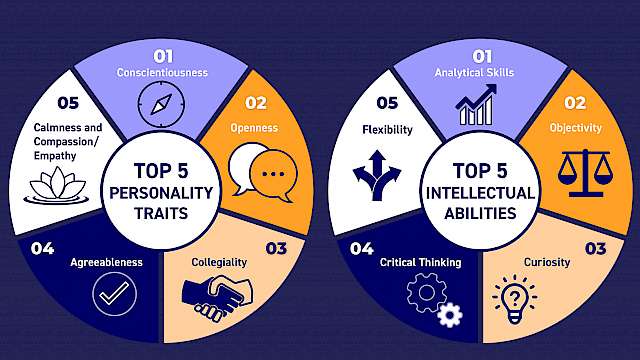Although there is no direct link between autism and violent extremism in the general population, some autistic individuals become radicalised and engage in extremist activities. Within these individuals, specific symptoms and features of autism may contextualise vulnerability as well as resilience, disengagement, and risk management in ways that differ from neurotypical populations.
Existing research suffers from the limited availability of data and cases. Through analysing a novel dataset of international cases of individuals with autism and extremism concerns, this research expands the existing evidence base. This study aimed to:
- Examine specific autistic symptoms, facets, or behaviours that may contextualise extremism vulnerability, risk, or resilience within at-risk populations.
- Examine the suitability of the Framework for the Assessment of Risk & Protection in Offenders on the Autistic Spectrum (FARAS) when applied to this population.
- Consider any implications for approaches and strategies for mitigating extremism risk and enhancing protection amongst individuals with autism with extremism concerns.
This research adopted a case study analysis approach, analysing a novel dataset of 18 closed-source international cases of individuals with autism and extremism concerns, provided by practitioners with direct knowledge of them. We used the FARAS to provide a conceptual framework for the analysis.
The findings indicate that in combination with wider environmental factors, the facets of autism outlined in the FARAS may contextualise the pull and push factors towards violent extremism amongst those who are vulnerable to extremist engagement. These factors are:
- Circumscribed Interests
- Visual Fantasy & Impaired Social Imagination
- Need for Order, Rules, Routines & Predictability
- Obsessionality, Repetition & Collecting
- Social Interaction & Communication Difficulties
- Cognitive Styles (Difficulties & Strengths)
- Sensory Hyper- & Hypo-Sensitivity
Overall, the findings suggest that the FARAS provides an appropriate conceptual framework to analyse the functional links, behaviours, and motivations that may be present amongst autistic individuals in extremism contexts. In particular, the findings highlight how individuals’ experiences of different facets of autism, within their wider circumstances, can contextualise pull or push factors towards extremist engagement. These findings provide specific contextual considerations for risk assessment and disengagement, as well as evidence-based practice and guidance for practitioners working with autistic individuals with extremism concerns. Through better understanding how these factors present amongst autistic individuals in these contexts, practitioners may better be able to understand vulnerability and risk in this population, which may subsequently present considerations for tailoring support to these individuals’ needs.
The Full Report of the Neurodivergence and Violent Extremism Case Studies is coming soon. In the meantime, you can download the Executive Summary and Overview on this page.
Read more
Al-Attar, Z. (2018a). Development and Evaluation of Guidance to Aid Risk Assessments of Offenders with Autism. Unpublished MA Dissertation, Sheffield Hallam University.
Al-Attar, Z. (2018b). Interviewing Terrorism Suspects and Offenders with an Autism Spectrum Disorder. The International Journal of Forensic Mental Health, 17(4), 321–337. https://doi.org/10.1080/14999013.2018.1519614
Al-Attar, Z. (2019a). Extremism, radicalisation & mental health: Handbook for practitioners. Radicalisation Awareness Network: Health & Social Care Subgroup, European Commission. https://home-affairs.ec.europa.eu/pages/page/ran-hsc-handbook-extremism-radicalisation-mental-health-handbook-practitioners-november-2019_en
Al-Attar, Z. (2019b). Introducing the FARAS – a Framework to Aid Risk Assessment with Offenders on the Autistic Spectrum. 18th International Conference on Offenders with an Intellectual and/or Developmental Disability, Birmingham, April 11.
Al-Attar, Z. (2020). Autism spectrum disorders and terrorism: How different features of autism can contextualise vulnerability and resilience. Journal of Forensic Psychiatry and Psychology, 31(6), 926–949. https://doi.org/10.1080/14789949.2020.1812695
Al-Attar, Z., Bates-Gaston, J., Dean, C., & Lloyd, M. (2018). Ethical guidelines for applied psychological practice in the field of extremism, violent extremism and terrorism. The British Psychological Society. https://doi.org/10.53841/bpsrep.2018.inf313
Allely, C. S. (2020). The psychology of extreme violence: A case study approach to serial homicide, mass shooting, school shooting and lone-actor terrorism. Routledge. https://doi.org/10.4324/9781003037965
Allely, C. S., & Faccini, L. (2017). A Conceptual Analysis of Individuals with an Autism Spectrum Disorder Engaging in Mass Violence. Journal of Forensic and Crime Studies, 1(1), 1–5. https://doi.org/10.18875/2638-3578.1.105
Braun, V., & Clarke, V. (2019). Reflecting on reflexive thematic analysis. Qualitative Research in Sport, Exercise and Health, 11(4), 589–597. https://doi.org/10.1080/2159676X.2019.1628806
Corner, E., & Gill, P. (2014). A False Dichotomy? Mental Illness and Lone-Actor Terrorism. Law and Human Behavior, 39(1), 23–34. https://doi.org/10.1037/lhb0000102
Corner, E., Gill, P., & Mason, O. (2016). Mental Health Disorders and the Terrorist: A Research Note Probing Selection Effects and Disorder Prevalence. Studies in Conflict and Terrorism, 39(6), 560–568. https://doi.org/10.1080/1057610X.2015.1120099
Druitt, F., Smith, D., Spaaij, R., Kernot, D., & Laver, A. (2023). Do autism spectrum disorders (ASD) increase the risk of terrorism engagement? A literature review of the research evidence, theory and interpretation, and a discussion reframing the research-practice debate. Journal of Policing, Intelligence and Counter Terrorism, 18(3), 307–332. https://doi.org/10.1080/18335330.2022.2158361
Faccini, L., & Allely, C. S. (2017). Rare instances of individuals with autism supporting or engaging in terrorism. Journal of Intellectual Disabilities and Offending Behaviour, 8(2), 70–82. https://doi.org/10.1108/JIDOB-11-2016-0022
HM Inspectorate of Prisons, HM Inspectorate of Probation, & HM Inspectorate of Constabulary and Fire & Rescue Services. (2021). Neurodiversity in the criminal justice system: A review of evidence. https://www.justiceinspectorates.gov.uk/hmicfrs/publications/neurodiversity-in-the-criminal-justice-system/
Kenyon, J., Binder, J. F., & Baker-Beall, C. (2023). Online radicalization: Profile and risk analysis of individuals convicted of extremist offences. Legal and Criminological Psychology, 28(1), 74–90. https://doi.org/10.1111/lcrp.12218
King, C., & Murphy, G. H. (2014). A systematic review of people with autism spectrum disorder and the criminal justice system. Journal of Autism and Developmental Disorders, 44(11), 2717–2733. https://doi.org/10.1007/s10803-014-2046-5
Lloyd, M. (2021). Ethical Guidelines for Working on P/CVE in Mental Health Care. Radicalisation Awareness Network, European Commission. https://home-affairs.ec.europa.eu/networks/radicalisation-awareness-network-ran/publications/ethical-guidelines-working-pcve-mental-health-care-2021_en
Lösel, F., Bender, D., Jugl, I., & King, S. (2020). Resilience against Political and Religious Extremism, Radicalization, and Related Violence: A Systematic Review of Studies on Protective Factors. In Understanding Recruitment to Organized Crime and Terrorism (pp. 55–84). Springer International Publishing. https://doi.org/10.1007/978-3-030-36639-1_3
Lösel, F., King, S., Bender, D., & Jugl, I. (2018). Protective Factors Against Extremism and Violent Radicalization: A Systematic Review of Research. International Journal of Developmental Sciences, 12(1–2), 89–102. https://doi.org/10.3233/DEV-170241
Meloy, J. R., & Gill, P. (2016). The lone-actor terrorist and the TRAP-18. Journal of Threat Assessment and Management, 3(1), 37–52. https://doi.org/10.1037/tam0000061
Monahan, J. (2012). The individual risk assessment of terrorism. Psychology, Public Policy, and Law, 18(2), 167–205. https://doi.org/10.1037/a0025792
National Autistic Society. (2023). What is autism. https://www.autism.org.uk/advice-and-guidance/what-is-autism
Salman, N. L., & Al-Attar, Z. (2023). A Systematic Review of Neurodivergence, Vulnerability, and Risk in the Context of Violent Extremism. [Manuscript in Preparation].
Schuurman, B. (2020). Research on Terrorism, 2007–2016: A Review of Data, Methods, and Authorship. Terrorism and Political Violence, 32(5), 1011–1026. https://doi.org/10.1080/09546553.2018.1439023
Weenink, A. W. (2015). Behavioral Problems and Disorders among Radicals in Police Files. Perspectives on Terrorism, 9(2), 17–33.
Woodbury-Smith, M. R., Loftin, R., Westphal, A., & Volkmar, F. R. (2022). Vulnerability to Ideologically-Motivated Violence Among Individuals With Autism Spectrum Disorder. Frontiers in Psychiatry, 13, 1–6. https://doi.org/10.3389/fpsyt.2022.873121
World Health Organisation. (2019a). 6A02 Autism spectrum disorder. In International statistical classification of diseases and related health problems (ICD) (11th ed.). http://id.who.int/icd/entity/437815624
World Health Organisation. (2019b). 6A05 Attention deficit hyperactivity disorder. In International statistical classification of diseases and related health problems (ICD) (11th ed.). http://id.who.int/icd/entity/821852937
Worthington, R., Al-Attar, Z., Lewis, A., & Pyszora, N. (2021). Rapid Evidence Assessment (REA) on Neurodiversity and Violent Extremism. AVERT. https://www.avert.net.au/s/Rapid-Evidence-Assessment-on-Neurodiversity-and-Violent-Extremism.pdf
Yin, R. K. (2017). Case Study Research and Applications (6th ed.). Sage Publications US.
Copyright Information
As part of CREST’s commitment to open access research, this text is available under a Creative Commons BY-NC-SA 4.0 licence. Please refer to our Copyright page for full details.
IMAGE CREDITS: Copyright ©2024 R. Stevens / CREST (CC BY-SA 4.0)






